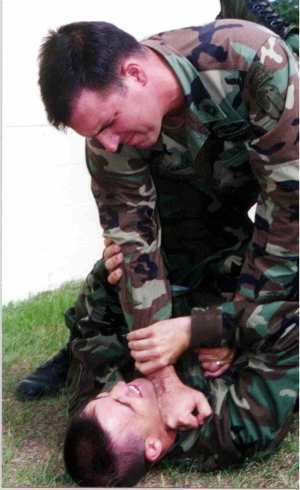Future of War (no. 5): The war we want is standoff -- so that's not the war we'll get

By Patrick McKinney
Best Defense future of war contest entry
Combat in Iraq and Afghanistan
demonstrated the value of standoff, and the Department of Defense's emerging
strategies, acquisitions, research, and intellectual debates emphasize
deterring and defeating opponents at standoff range. Unfortunately, the war
after next will again be fought in close proximity.
At their core, the combat forces of the
U.S. Army and U.S. Marine Corps exist to close with and destroy the enemy. The
joint fight with the U.S. Air Force and U.S. Navy enabled swift initial
campaigns in Iraq and Afghanistan, but stability and then counterinsurgency
operations necessitated that forces get close to the populace and to the enemy.
Improvised explosive devices (IEDs) first exploited American reliance on ground
transport and then on dismounted exposure. The harsh price paid in lives and limbs
demands means to keep the warfighter out of the close fight, but that remains a
tall order.
With Iraq "over" and Afghanistan
winding down, DOD is preparing its forces for future missions and the next
fight, which appears not to be another close fight. The majority of
Mine-Resistant Ambush Protected vehicles (MRAPs), the armored vehicles procured
to protect U.S. forces in Iraq and Afghanistan, are not being returned to the
United States, and Congress and the Army just delayed the heavy Ground Combat
Vehicle. Instead, the Army plans to develop new sensors, unmanned aerial
capabilities, and robots to support and replace soldiers and maximize standoff
while it assesses vehicle options. The Marine Corps has not decided on its next
amphibious or armored vehicle as it weighs its desired amphibious expeditionary
mission against the lessons of Iraq and Afghanistan and the capabilities of
potential foes.
The Air Force is considering the
retirement of the A-10, a close air support aircraft, and plans to replace it
with the multi-role Joint Strike Fighter (F-35). The F-35 and F-22, the USAF's
premier fighter aircraft, are designed to engage foes at long ranges (foes
should never even see the F-22). The Navy assessed the Anti-Access/Area Denial
(A2/AD) developments in the Middle East, South Asia, and the Pacific, and seeks
to provide capabilities at longer ranges (stealth, unmanned aircraft,
rail-guns, missiles, etc.). The Littoral Combat Ship (LCS) is designed to
operate close to shore, in the littorals, but it may be under-armed and
under-armored for the task, and the Pentagon just announced plans to shrink the
future LCS fleet.
Air-Sea Battle and Offshore Control
propose ways to use maritime and air forces at standoff range in response to
competitor A2/AD, maritime, and air capabilities. Operation Odyssey Dawn, the
2011 campaign against Muammar Gaddafi's regime, sought to keep coalition ground
forces out of Libya and relied upon air and naval forces to attack the regime
and assist rebel forces. President Obama threatened air and naval strikes
against the Assad regime in Syria, and the United States and its allies
continue to resist providing ground forces to help calm or end the conflict.
Should Air-Sea Battle, Offshore Control, airstrikes, or deterrence fail,
though, U.S. forces will once again close with the populace and enemies abroad,
and when they do, they will need firepower, mobility, intelligence, and
survivability. Standoff is desirable, but it is expensive, hard, and it does
not last.
The French hoped for a light and quick
presence in Mali, but their forces remain to maintain stability. U.S. forces
were rushed into South Sudan to help evacuate personnel and they took
casualties from rebel fire. The Corps plans to put Marines back out to sea and
forward deployed, and the Army has started to regionally align units for
foreign assistance and training missions. The war after next will be fought in
close proximity, just like the conflicts before it, and DOD must continue to
invest in training, protection, and firepower which will carry the U.S. warfighter
through the next close fight.
Patrick McKinney is an Army civilian in acquisitions. He
served as an Army field artillery and military intelligence officer, and
deployed as a platoon leader to Operation Iraqi Freedom IV. The opinions in
this piece are his and do not necessarily reflect those of the U.S. Army or the
Department of Defense.
TOM NOTE: Entries are still being accepted for the Best
Defense
Future of War
contest
, probably until the end of March or until I get tired of
reading them. Here's
info
. Please, no
footnotes, previously published stuff, or War College papers.
Thomas E. Ricks's Blog
- Thomas E. Ricks's profile
- 436 followers



